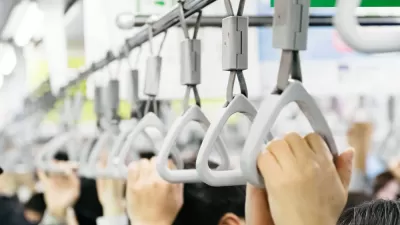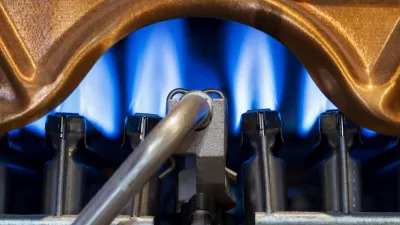Researchers from Weill Cornell Medical College have spent the last 18 months scouring the New York Subway in the search for a DNA profile of the system. They even created a map of the 15,152 microbes they found.
If you think of New York City as a place where anything can happen, you probably weren't thinking that contracting Bubonic Plague from a handrail at a subway stop as one of them. But researchers from Weill Cornell Medical College recently set out to map the kind of microbes they found in the New York Subway as part of an intensive research project combining "big data," public health, and public transit.
Robert Lee Holtz reports on the project for the Wall Street Journal (which means there might be a paywall blocking access to the story): "The big-data project, the first genetic profile of a metropolitan transit system, is in many ways 'a mirror of the people themselves who ride the subway,' said Dr. Mason, a geneticist at the Weill Cornell Medical College."
Meghan Holohan also covers the study for NBC News. According to Holohan, "Weill Cornell researchers attempted to identify all 15,152 microbes for a PathoMap, which could be used to track infectious disease outbreaks."
Andrew M. Seaman also covered the story for Reuters.
Lastly, Science Daily also has an abstract detailing the methodology and some of the findings of the study.

Trump Administration Could Effectively End Housing Voucher Program
Federal officials are eyeing major cuts to the Section 8 program that helps millions of low-income households pay rent.

Planetizen Federal Action Tracker
A weekly monitor of how Trump’s orders and actions are impacting planners and planning in America.

Ken Jennings Launches Transit Web Series
The Jeopardy champ wants you to ride public transit.

Crime Continues to Drop on Philly, San Francisco Transit Systems
SEPTA and BART both saw significant declines in violent crime in the first quarter of 2025.

How South LA Green Spaces Power Community Health and Hope
Green spaces like South L.A. Wetlands Park are helping South Los Angeles residents promote healthy lifestyles, build community, and advocate for improvements that reflect local needs in historically underserved neighborhoods.

Sacramento Plans ‘Quick-Build’ Road Safety Projects
The city wants to accelerate small-scale safety improvements that use low-cost equipment to make an impact at dangerous intersections.
Urban Design for Planners 1: Software Tools
This six-course series explores essential urban design concepts using open source software and equips planners with the tools they need to participate fully in the urban design process.
Planning for Universal Design
Learn the tools for implementing Universal Design in planning regulations.
Heyer Gruel & Associates PA
Ada County Highway District
Institute for Housing and Urban Development Studies (IHS)
City of Grandview
Harvard GSD Executive Education
Toledo-Lucas County Plan Commissions
Salt Lake City
NYU Wagner Graduate School of Public Service





























